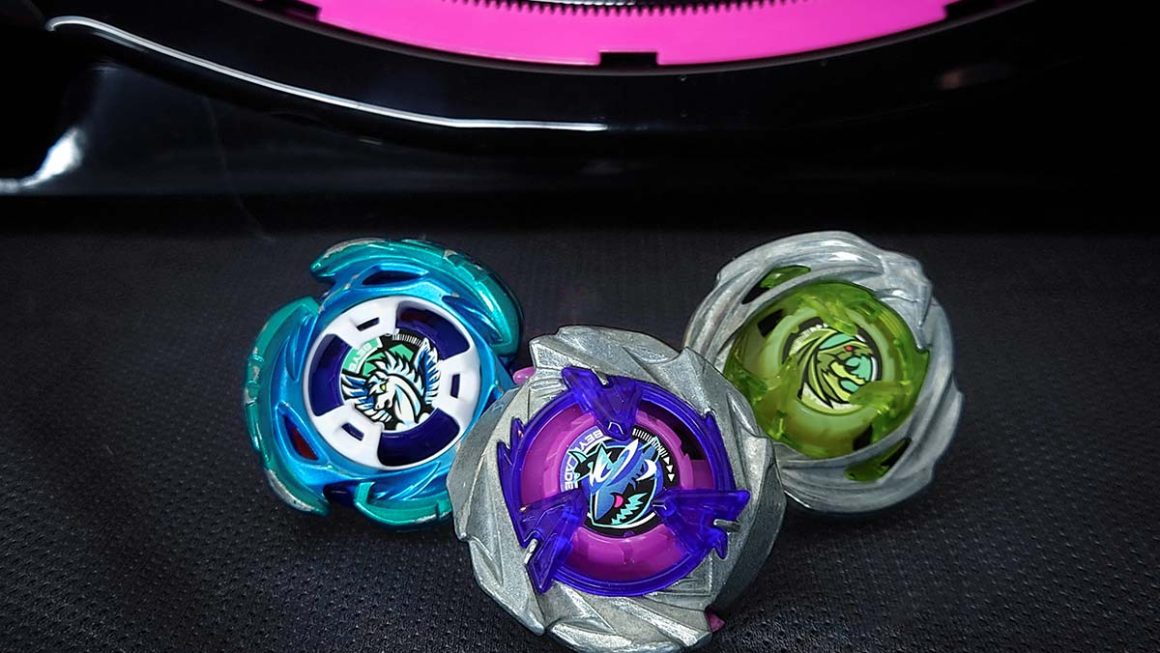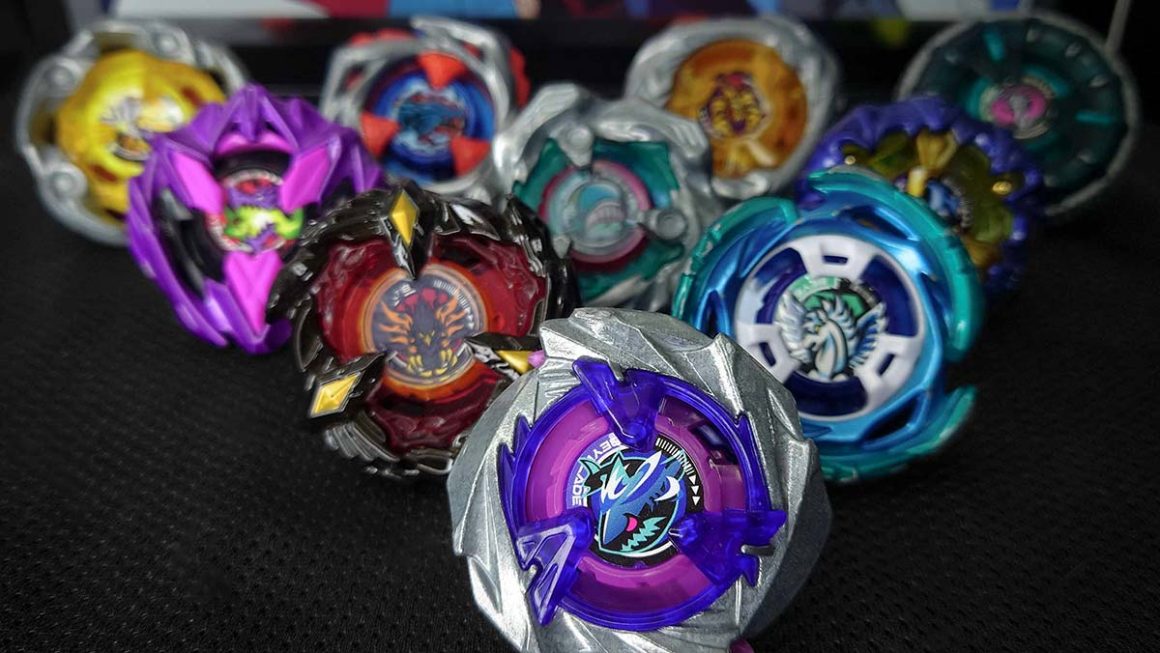Affiliate Disclosure: If you buy something through some of the links on this post, you won’t pay any extra, but we’ll get a small commission. This helps us keep things running. Thanks for your support!
Since Beyblade X’s release in Japan in summer of 2023, Bladers have had more than enough time and opportunity to experience and even master the game of Beyblade X – in a same-spin, right-spinning format.
Throughout its first year, all Beyblade X products released have had their spin direction in common, regardless of their typing or gimmick. The prospect of a left-spinning Beyblade has been on Bladers’ minds for quite some time.
BX-34 Starter Cobalt Dragoon 2-60C is the first left-spin Beyblade X bey. As such, it is also the first to make use of the other side of the Xtreme Line, a development that may change the way Beyblade X is played forever.
With it we are introduced to a set of entirely brand new parts: the Cobalt Dragoon Blade, 2-60 Ratchet, and Cyclone Bit. In this article we aim to examine each piece of BX-34 one-by-one, determining how exactly these parts shake up the competitive landscape.
It is the successor to the Beyblade X app Rare Bey Get Battle limited BX-00 Cobalt Drake 4-60F.
Summary
The BX-34 Cobalt Dragoon 2-60C Starter provides you with a unique left spinning Cobalt Dragoon Blade with a few niche applications, a currently nigh unusable 2-60 Ratchet, and the good Cyclone Bit which rivals the elusive Rush Bit. Finally, you get a dedicated left string launcher to tie the package in a nice self-contained bow.
Overall, BX-34 Cobalt Dragoon 2-60C Starter is a good purchase for competitive players as it enables unique new ways to play Beyblade X that they should understand, but it’s not strong enough to be the singular purchase new players should make.
Final Score: 7/10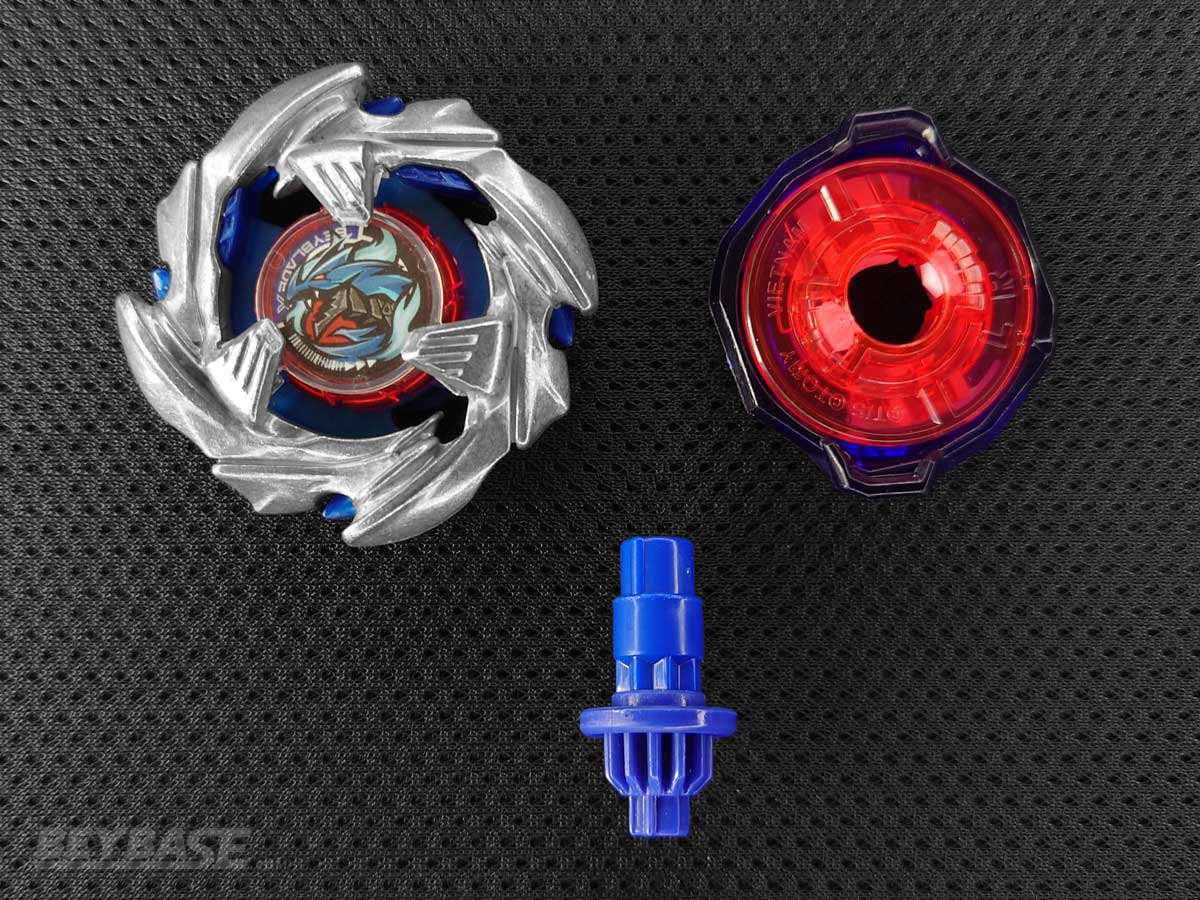
Parts Summary
Cobalt Dragoon Blade:
The Cobalt Dragoon Blade is, at release, a heavy one-dimensional Blade that is only truly good for knocking out docile combos. However, many Blades like this already exist, perform in a more consistent manner, and have access to the Burst Finish mechanic more reliably. With the introduction of the Glide Bit soon after, it manages to carve out a niche that only it can: an–albeit inconsistent–opposite spin stamina threat to the Wizard Rod Blade combos that are ubiquitous in the current meta. Read More.
2-60 Ratchet:
The 2-60 Ratchet is in an unfortunate spot where its two protrusions make it near unusable on low profile or highly aggressive combos, as they are far too recoil-heavy. They may serve a niche purpose in stamina mirror matches but even there the 2-60 Ratchet seems inconsistent. Perhaps with time and wear this Ratchet will be more usable. Read More.
Cyclone Bit:
The Cyclone Bit is the unexpected star of the release, providing Bladers with a “Rush Bit Lite”. It displays many of the calm and cool characteristics that the Rush Bit has, along with some fairly strong and fast Xtreme Line dashes. Overall it is an attack-focused Bit that is best used in the same places and ways the Rush Bit is, with the understanding that it may not get as many Xtreme Dashes or last quitet as long as the Rush Bit, but they will be more violent. Read More.
X String Launcher L:
The X String Launcher L is plagued with consistency issues at release, with the propensity to bunch up easily and fail to retract/extract. We speculate that this is a result of updated launcher case housing. At release this is the only way to launch Cobalt Dragoon, so its inconsistency and troubles hurt the release overall. In future iterations, some believe that this Launcher error is fixed, but without definitive proof or statements from Takara-Tomy, assume that your mileage may vary.
Where to Buy BX-34 Cobalt Dragoon 2-60C Starter

Heads up: If you buy something through some of the links on this post, you won’t pay any extra, but I’ll get a small commission. This helps me keep things running. Thanks for your support!

25 years. 4 generations. And we still don’t know: is Beyblade a sport? A toy?
I wrote a 100 page article to answer this question.

Sponsored: Order the newest Beyblades at malloftoys.com!
Heads up: If you buy something through Mall of Toys, you won’t pay any extra, but I’ll get a small commission. This helps me keep things running. Thanks for your support!
Product Details
- Brand: TAKARA-TOMY
- Product Code: BX-34
- Product Contents:
- BX-34 Cobalt Dragoon 2-60C
- BX-34 String Launcher L (Blue Ver.)
- Series: Beyblade X
Part Weights
- Cobalt Dragoon Blade: 37.77g
- 2-60 Ratchet: 6.21g
- Cyclone Bit: 2.17g
Additional Notes:
- All tests in this article were done in the BX-10 Xtreme Stadium.
- All tests in this article were done with two players, unless otherwise specified.
- Relevant matches saw both combos switch out Ratchets and Bits at the half-way point to account for part performance variation, as well as Blader switching for those done with two players.
- Launch style was a basic hard launch parallel to the stadium unless otherwise specified.
- This review covers the performance of Cobalt Dragoon 2-60C with and against parts released up to and including the UX-07 Phoenix Rudder Deck Set.
Cobalt Dragoon Blade Review
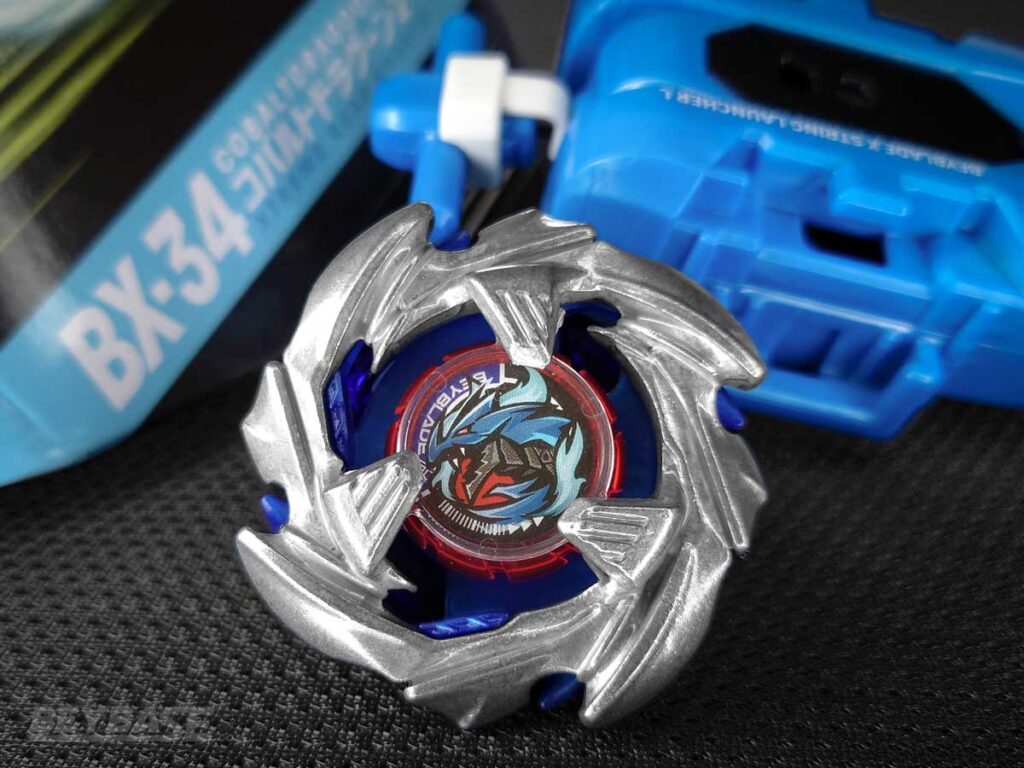
The Cobalt Dragoon Blade is, technically speaking, an eight-sided Blade that acts like a four-sided Blade in practice as its four smaller contact points often stay out of the way.
Its aggressive slopes and angles allude to an aggressive use case, namely pure knock-out focussed Attack.
Does the fact that Cobalt Dragoon is able to rotate in the opposite direction to all other Beyblades at its release make a meaningful impact? We set out to test it to find out.
What is different about Cobalt Dragoon Blade compared to other X Blades?
As mentioned the Cobalt Dragoon Blade is a left-spinning Blade, meaning that compared to all other Blades at its release, it is one of a kind. The upshot of being an ‘opposite spinning’ Blade that by default Cobalt Dragoon Blade isn’t likely to have its Ratchet burst through direct Blade contact.
It should also be noted that Cobalt Dragoon Blade’s underside was deliberately undermined by the manufacturer, with each of the four smaller contact points being varying degrees of hollowed out. This causes its centre of balance to be irregular. We speculate that this is an effort to reduce the likelihood that Cobalt Dragoon Blade can spin equalize effectively, and become an effortless out-spin machine on the right Bit.
Takara-Tomy has exhibited this type of design quirk throughout several other Blades released to date, such as the Hells Chain Blade and Knight Shield Blade. But depending on the Ratchet you use and its positioning, the irregular centre of balance can be countered to a degree.
Because every right-spinning Blade is moving in the direction that Cobalt Dragoon Blade’s Ratchet will lock in, rather than in the direction it would loosen or unlock in, the likelihood of hitting Cobalt Dragoon Blade’s Ratchet in right-spin hard enough to unlock it is very low.
With that said, Cobalt Dragoon is far from unburstable, thanks to the fact that opposite spinning Beyblades can hit it onto the Xtreme Line, where its own spin direction can be used against it to unlock the Ratchet on contact, or just detach the Bit from the Beyblade.
The opposite is also true, too, where Cobalt Dragoon Blade’s ability to burst right-spin opponents through Ratchet contact is also hindered. As a potential Attack type, this can pose a problem as it decreases Cobalt Dragoon Blade’s odds of scoring an Attack-focussed win condition.
How this all shakes out in actual battle is something we want to get to the bottom of.
Is the Cobalt Dragoon Blade good for Attack type Beyblades?
Given its ferocious-looking design, it makes sense to try Cobalt Dragoon Blade as a pure Attack type first! We definitely wonder if this aggressive shape is powerful enough to score consistent knock-outs or Xtreme Line Burst Finishes in lieu of underside Ratchet-contact Burst Finishes.
Cobalt Dragoon Blade vs. Wizard Rod 9-60B

It is clear that the current benchmark for Attack style Blades is a stamina-based Wizard Rod Blade combo. This Wizard Rod Blade combo is ubiquitous and very effective as a consistent performer against pretty much any combo, give or take.
This combo is excellent in terms of raw stamina and even disruption of opponent’s attack potential through its smooth and weighty shape. Wizard Rod Blade on Ball Bit is known to be a bit weaker into “glass cannon” attack types that focus on just one or two big consistent hits, such as Shark Edge Blade or Dran Buster Blade.
For Cobalt Dragoon Blade it made most sense to put it on 4-60LF to make the most of its angled projections, as well as our 4-60 Ratchet being the one Ratchet that seemed to balance out the Blade best as it’s orientation slightly offset the imbalance found on the Blade underside and we don’t expect the 4 Ratchet protrusions to negatively impact burst resistance here.
Cobalt Dragoon 4-60LF vs. Wizard Rod 9-60B
- CDG4-60LF wins: 5 wins, 14 points (4 XF, 1 OF)
- WR9-60B wins: 5 wins, 5 points (5 SF)
- Cobalt Dragoon Blade Win Percentage: 50%
- Cobalt Dragoon Blade Points Percentage: 74%
- Mint Cobalt Dragoon Blade, worn Wizard Rod Blade
Benchmark: Shark Edge 3-60LF vs. Wizard Rod 9-60B
- SE3-60LF wins: 4 wins, 8 points (1 BF, 3 OF)
- WR9-60B wins: 6 wins, 6 points (6 SF)
- Shark Edge Blade Win Percentage: 40%
- Shark Edge Blade Points Percentage: 57%
- Mint Shark Edge Blade, worn Wizard Rod Blade
Here we saw an astounding number of Xtreme Finishes from Cobalt Dragoon Blade compared to just about any other testing we’ve done in the past. We attribute this remarkable outcome less to the ability of Cobalt Dragoon (which certainly seems to do well), and more to the learning curve required to make sure that Wizard Rod Blade stays out of the way of an opponent coming from the opposite side of the Xtreme Line.
Compared to Shark Edge Blade, the results are noticeably in favour of the Cobalt Dragoon Blade. It should be noted though, that while Shark Edge Blade didn’t win quite as frequently or in as spectacular of a fashion, all of its hits were consistent and meaningful.
Comparing Cobalt Dragoon Blade to that, when it wasn’t taking advantage of poor Wizard Rod Blade positioning, its hits were not quite strong enough to ensure knock-outs, especially later on in the battle.
Cobalt Dragoon Blade seems to excel when you can take advantage of opponent positioning for a well-done Xtreme Finish, and less so as a long-lasting threat even at the end of the game. Shark Edge Blade still manages to feel more consistent against Wizard Rod Blade, especially with the chance that it can score a last-second knock-out or a Burst Finish.

Is the Cobalt Dragoon Blade good for Stamina type Beyblades?
Given the excellent result and decent “feel” against its contemporary top tier opponent in Wizard Rod on Ball Bit as an Attack type, we thought it best to move on to how Cobalt Dragoon Blade fares as a spin-equalizer.
We can assume that Takara-Tomy did concern itself with its opposite-spin Stamina potential, given the Blade was heavily neutered in its underside balance, but sometimes those efforts aren’t enough.
The very first Bit that comes to mind when we consider testing opposite spin Stamina matches, and Life After Death (the ability to continue to precess even while tipped over), is of course the Disc Ball Bit. We started there.
Having balance-tuned our Cobalt Dragoon Blade earlier and found a specific 4-60 Ratchet worked best at balancing it out a bit better, we went with that. Once again, we used Wizard Rod on Ball as our benchmark.
Cobalt Dragoon 4-60DB vs. Wizard Rod 9-60B
- CDG4-60DB wins: 0 wins, 0 points
- WR9-60B wins: 10 wins, 10 points (10 SF)
- Cobalt Dragoon Blade Win Percentage: 0%
- Cobalt Dragoon Blade Points Percentage: 0%
- Semi-worn Cobalt Dragoon Blade, worn Wizard Rod Blade
To call this result disappointing would probably be an understatement. Unfortunately Disc Ball Bit wasn’t nearly enough to keep Cobalt Dragoon Blade afloat at the end of the match, and Wizard Rod on Ball won handily.
Cobalt Dragoon Blade’s imbalance was on full display here, though perhaps if there was a 50-height Ratchet to even out Disc Ball Bit’s tall height, it would have been less of an issue.
Despite these very disappointing results we persevered. Next we tried a Ball Bit mirror match.
Cobalt Dragoon 4-60B vs. Wizard Rod 9-60B
- CDG4-60B wins: 0 wins, 0 points
- WR9-60B wins: 10 wins, 10 points (10 SF)
- Cobalt Dragoon Blade Win Percentage: 0%
- Cobalt Dragoon Blade Points Percentage: 0%
- Semi-worn Cobalt Dragoon Blade, worn Wizard Rod Blade
While the Ball Bit did seem to help rebalance Cobalt Dragoon Blade better during the match, it simply wasn’t enough to overcome Wizard Rod on Ball. Not even close. Cobalt Dragoon Blade’s aggressive design and inherent imbalance was just too much.

In the process of writing this review, the Glide Bit from the UX-07 Phoenix Rudder Deck Set was released. The highlight of this release is the Glide Bit.
The wide low-friction POM ball-shaped tip of Glide seemed like a natural fit and potential saving grace for Cobalt Dragoon, which was consistently fighting against the inherent imbalance it possesses. We decided to test it out with Glide to find out if our assumption might be true.
Note that all of these tests were conducted with a single player and launch techniques were experimental throughout in terms of angles, positioning, and launch power.
Cobalt Dragoon 5-60G vs. Wizard Rod 9-60B
- CDG5-60G wins: 4 wins, 5 points (3 SF, 1 OF)
- WR9-60B wins: 0 wins, 0 points
- Cobalt Dragoon Blade Win Percentage: 100%
- Cobalt Dragoon Blade Points Percentage: 100%
- One Player Testing (Kei)
Cobalt Dragoon 5-60G vs. Wizard Rod 3-60B
- CDG5-60G wins: 2 wins, 5 points (1 OF, 1 XF)
- WR3-60B wins: 6 wins, 13 points (2 SF, 1 BF, 3 XF)
- Cobalt Dragoon Blade Win Percentage: 40%
- Cobalt Dragoon Blade Points Percentage: 28%
- One Player Testing (Kei), two of the Xtreme Finishes were self-inflicted by Cobalt Dragoon
What we immediately noticed after these two initial sets was that Cobalt Dragoon was indeed benefiting from the stability that the Glide Bit provided. It was able to successfully counteract the imbalance of Cobalt Dragoon, which enabled it to score some impressive Spin Finishes against Wizard Rod.
The magnitude of this cannot be understated. Wizard Rod to this point has been the undisputed champion in terms of Spin Finish ability.
That being said, we can see here there is a disparity between the results it achieved when playing the 9-60 Ratchet and 3-60 Ratchet. The Wizard Rod 3-60 Ball was able to maintain its posture better than the 9-60 variant, which let to it being in a better position to score all types of win conditions.
The three Xtreme Finishes Wizard Rod was able to score included two inflicted by Cobalt Dragoon on itself. Glide was helping it maintain its posture, but the wide tip and low friction POM material used for Glide was causing it to move around the stadium more. This simultaneously increased the chances of it scoring an Over Finish or Xtreme Finish for itself or having it inflicted on itself.
Although this is consistent with the general truth that the 3-60 Ratchet has better stamina than the 9-60 Ratchet, the huge variance in results did make us feel there was still more to uncover here.
Cobalt Dragoon 5-60G vs. Wizard Rod 9-60B
- CDG5-60G wins: 3 wins, 6 points (1 SF, 1 OF, 1 XF)
- WR9-60B wins: 3 wins, 4 points (2 SF, 1 OF)
- Cobalt Dragoon Blade Win Percentage: 50%
- Cobalt Dragoon Blade Points Percentage: 60%
- One Player Testing (Kei)
We first tried the matchup versus WR 9-60B to see if the first set was a fluke or not.
It turned out to be different. Although, not quite as strong of a showing for Wizard Rod 9-60B as we saw for Wizard Rod 3-60B. Before we get into our hypothesis regarding why this might be, let’s take a look at some further tests:
Cobalt Dragoon 7-60G vs. Wizard Rod 3-60B
- CDG7-60G wins: 11 wins, 16 points (6 SF, 5 OF)
- WR3-60B wins: 3 wins, 6 points (1 SF, 1 OF, 1 XF)
- Cobalt Dragoon Blade Win Percentage: 79%
- Cobalt Dragoon Blade Points Percentage: 73%
- One Player Testing (Kei), switched to a better balanced WR3-60B for last four rounds. Results were 2 SF and 1 OF for Cobalt Dragoon. And 1 SF for Wizard Rod.
Next up, we tried out the 7-60 Ratchet from UX-06 Leon Crest 7-60GN.
7-60 seems to have improved Cobalt Dragoon Glide in two ways: stamina and defense. Wizard Rod 3-60B scored far less Spin Finishes this time and less Xtreme Finishes.
Later on, we conducted more tests comparing various Cobalt Dragoon Glide variants versus Wizard Rod Ball variants and concluded that this particular matchup depends greatly on launch power, positioning, and angle. More so than a lot of other existing matchups in Beyblade X.
Because Cobalt Dragoon is inherently imbalanced, if it cannot get strong or consistent enough hits against its opponent throughout the battle, its chances of winning by Spin Finish decrease.
Some players may launch their combo weakly thinking that they can apply logic from Beyblade Burst era opposite spin matchups, but they will find that results in a loss in most situations. Both Cobalt Dragoon and Wizard Rod need high RPM to ensure that they can avoid their opponent as much as possible and rely less on spin equalization in order to win.
The Cobalt Dragoon Blade’s aggression was also often on display. But it was literally hit or miss.
As a result of these variables, the success rate and experiences people have with this combo will vary wildly.
The performance ceiling for this combo against opponents wielding tips like the Ball Bit is very high. It is competitive at release.
In some ways you can argue that it is reliant upon skill. However, the inherent properties of the Blade and Bit also lend itself towards a certain level of inconsistency.
Additionally, we found that right-spin opponents using Bits like Glide, Point, and Hexa performed well against Cobalt Dragoon Glide in terms of Spin Finish potential. This narrows the use-case scenarios for the combo.
Is the Cobalt Dragoon Blade good for Counter-Attack type X Beyblades?
Given it is left-spinning and may have the ability to outlast other Attack types, we decided to test Cobalt Dragoon Blade’s merits as a cannibalistic Attack type. This meant putting it on a Bit we felt is sufficiently aggressive, but with enough innate endurance to weather other Attack Bits like Low Flat Bit or Rush Bit: Taper Bit.
Cobalt Dragoon 4-60T vs. Shark Edge 3-60LF
- CDG4-60T wins: 2 wins, 2 points (2 SF)
- SE3-60LF wins: 8 wins, 15 points (2 XF, 1 BF, 2 OF, 3 SF)
- Cobalt Dragoon Blade Win Percentage: 20%
- Cobalt Dragoon Blade Points Percentage: 13%
- Semi-Used Cobalt Dragoon Blade, Semi-Used Shark Edge Blade
Cobalt Dragoon 4-60T vs. Soar Phoenix 1-60R
- CDG4-60T wins: 3 wins, 5 points (2 OF, 1 SF)s
- SP1-60R wins: 7 wins, 10 points (1 XF, 1 OF, 5 SF)
- Cobalt Dragoon Blade Win Percentage: 30%
- Cobalt Dragoon Blade Points Percentage: 33%
- Semi-Used Cobalt Dragoon Blade, Semi-Used Soar Phoenix Blade
In both instances we found that Cobalt Dragoon Blade’s design was too recoil-laden for its weight to manage, meaning that it was easily pushed around and in some instances knocked-out.
Because it is meeting other Blades head on, it was difficult for them to reliable score a direct knock-out from an advantageous position. Instead, many battles went to outspin, where the large blows opponents could land on Cobalt Dragoon Blade exacerbated its balance issues even on a Bit with superior endurance.
The result was that Cobalt Dragoon Blade led to many stale-mate situations, but could not close out victories through out-spins reliably. Instead it was more often than not bullied into submission, and as a result, it serves as a poor answer to other Attack type Blades.
Does the Cobalt Dragoon Blade have good defense?
As discussed above, the Cobalt Dragoon Blade wasn’t able to perform well using the Taper Bit to counter other attack types.
One of the big issues it faced was an inability to win in the end game when it came down to a Spiin Finish. In an effort to resolve this weakness, next we decided to try it out on the Glide Bit again. Our hypothesis was that the improved stamina and posture-maintaining ability of Glide would help it to outlast and defend against attack types.
Cobalt Dragoon 5-60G vs. Phoenix Wing 3-60 Cyclone
- CDGCD5-60G wins: 6 wins, 9 points (3 SF, 3 OF)
- PW3-60C wins: 8 wins, 15 points (1 SF, 7 OF)
- Cobalt Dragoon Blade Win Percentage: 38%
- Cobalt Dragoon Blade Points Percentage: 43%
- One Player Testing (Kei), Worn Phoenix Wing Blade, Cobalt Dragoon launched first
- 1 self-inflicted OF for PW3-60C
Glide definitely helped it to score Spin Finishes, but the overall results with the 5-60 Ratchet weren’t yet overwhelmingly impressive. Phoenix Wing was able to score Over Finishes with ease.
Cobalt Dragoon 7-60G vs. Phoenix Wing 3-60 Cyclone
- CDGCD7-60G wins: 6 wins, 7 points (5 SF, 1 OF)
- PW3-60C wins: 4 wins, 9 points (1 OF, 2 BF, 1 XF)
- Cobalt Dragoon Blade Win Percentage: 60%
- Cobalt Dragoon Blade Points Percentage: 44%
- One Player Testing (Kei), Worn Phoenix Wing Blade, Cobalt Dragoon launched first
During our earlier tests with this combination against Wizard Rod we found that the 7-60 Ratchet improved this combo’s stamina and defense. It could maintain its posture better and in terms of defense, it was able to resist being Over Finished better when compared to 5-60. Possibly because of 7-60’s bulky, tall design which lowers its centre of gravity and allows it to sometimes scrape the stadium to slow itself down when hit.
This was on display again during this matchup. And Cobalt Dragoon was able to work its way up to a decent 60% win percentage.
On the other hand, it did suffer two burst finishes during this set as well. This revealed some of the inherent risk in using the combination of 7-60 and Glide together. Two pieces which don’t have strong burst resistance.
Therefore, players who wish to use this combo may have to choose carefully between a Ratchet which enhances stamina and resistance to Over Finish, but lowers burst resistance and one which lowers stamina, but boosts burst resistance. However, we did not do comprehensive testing with all Ratchets to determine if there is an alternative that would allow Cobalt Dragoon Glide to maintain the positive qualities of both 5-60 and 7-60.
Phoenix Wing performed relatively well against Cobalt Dragoon on Glide, but one thing we noticed was that it felt nearly impossible to win by Spin Finish. This places some pressure on the user that we weren’t too satisfied with.
We tried out the Tyranno Beat Blade to see if it could correct this weakness of Phoenix Wing. Tyranno Beat has better stamina and defense than Phoenix Wing, so it seemed like it could work.
Cobalt Dragoon 7-60G vs. Tyranno Beat 3-60 Rush
- CDGCD7-60G wins: 10 wins, 17 points (4 SF, 5 OF, 1 XF)
- TB 3-60R wins: 10 wins, 16 points (5 SF, 2 OF, 2 BF, 1 XF)
- Cobalt Dragoon Blade Win Percentage: 50%
- Cobalt Dragoon Blade Points Percentage: 52%
- One Player Testing (Kei), Worn Tyrano Beat Blade, Cobalt Dragoon launched first
- 4 of the SF by TB occurred in the first half when CDG was launched a bit less than full power
Our hypothesis was correct. Cobalt Dragoon was often unable to overcome the superior balance and stamina of Tyranno Beat, leading to five losses by Spin Finish.
Interestingly, it scored more Over Finishes in this matchup. Perhaps this is because of the slightly greater weight difference between Tyranno Beat and Phoenix Wing.
It is also worth noting that in later informal testing, we also found that using 7-60 in this matchup helped Tyranno Beat maintain its posture and win by Spin Finish slightly more than 3-60.
Cobalt Dragoon 7-60G vs. Dran Buster 5-60 Taper
- CDGCD7-60G wins: 8 wins, 9 points (7 SF, 1 OF)
- DB5-60T wins: 2 wins, 4 points (1 BF, 1 OF)
- Cobalt Dragoon Blade Win Percentage:80%
- Cobalt Dragoon Blade Points Percentage: 69%
- One Player Testing (Kei), Worn Dran Buster Blade, Cobalt Dragoon launched first
In this matchup, we wanted to see if Dran Buster’s immense attack power could overcome Cobalt Dragoon in the early going of a battle to expose its low burst resistance or score a knock-out.
Cobalt Dragoon was able to easily deflect most attacks from Dran Buster and handily won, in the end. Dran Buster did score one burst finish and was worn down, however. We believe Dran Buster’s win percentage would be improved if it was new.
It was improved significantly later when testing informally with the Point Bit, which enabled Dran Buster to win by Spin Finish.
The Verdict
The Cobalt Dragoon Blade is a unique, competitive, albeit inconsistent Blade. It feels as if it is on the cusp of greatness. It has a lot going for it. At release, it is among the heaviest Blades in the game. And it is the only left-spinning Beyblade in the Beyblade X lineup.
This grants it completely unique interactions with every right-spin opponent it may face. As such, it requires specific thought towards how to launch it effectively. Players who put in the effort to do this will find that it is capable of winning a wide range of matchups, especially on the Glide Bit. In this scenario it has the endurance and aggression it needs to win against some top tier Beyblades.
However, despite the effort players may put in, it seems to lack consistency. Likely because of the imbalance built into its design, many matchups feel as if they are 50/50 or dependent even more on a wide variety of variables than usual for Beyblade X. At the same time it can struggle against certain opponents using Bits like Point or Hexa even when using the Glide Bit. And its performance on other Bits against right-spin opponents is overall is even less consistent. This makes its application competitively narrow.
It difficult to recommend because of this, but it is nevertheless viable competitively in some specific, common scenarios for those who put in the time to understand it.
With time, as more left-spin Beyblades are released Cobalt Dragoon may find additional use. More than most parts, the Cobalt Dragoon Blade is a part which has the potential to improve in the future.
Recommended Cobalt Dragoon Blade Combo: Cobalt Dragoon 7-60 Glide
How to Build Cobalt Dragoon 7-60 Glide
-
Cobalt Dragoon Blade
- BX-34 Cobalt Dragoon 2-60C
-
7-60 Ratchet
- UX-06 Leon Crest 7-60GN
-
Glide Bit
- UX-07 Phoenix Rudder Deck Set – Phoenix Rudder 9-70G
2-60 Ratchet Review
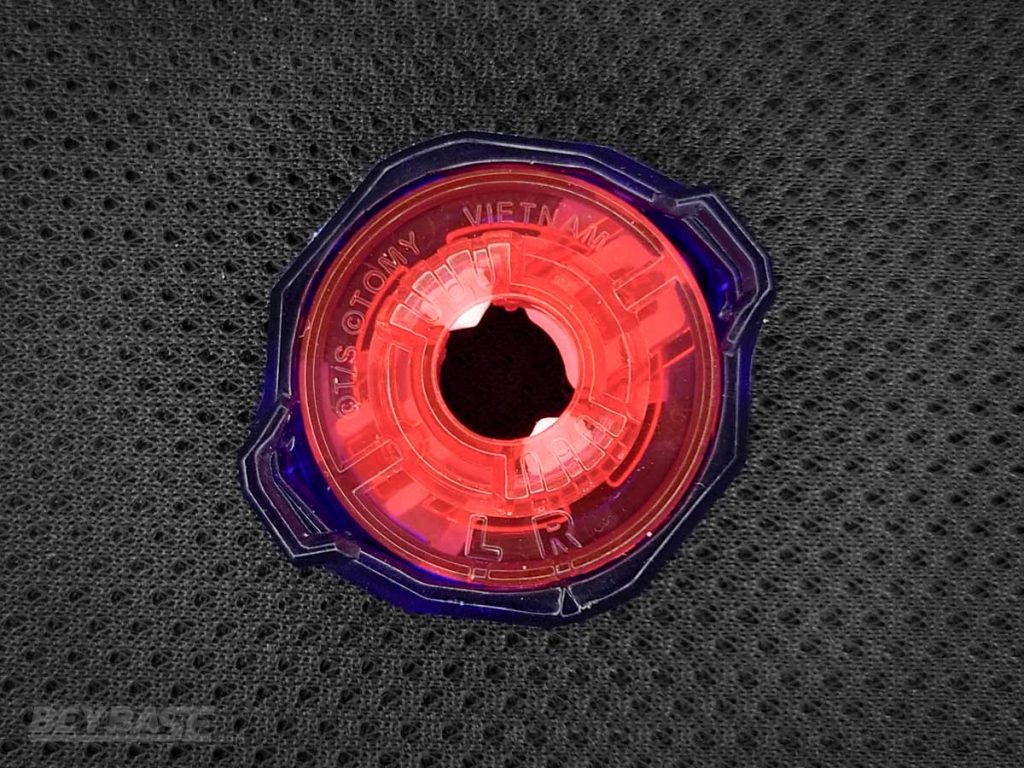
How is the 2-60 Ratchet Different From Others?
As its name implies it is two-pronged Ratchet at the expected 60 height. What subverts our expectations is just how blocky and ‘in the way’ these protrusions feel compared to all other previous Ratchet designs. Its locking mechanism feels similarly tight to the 4-60 Ratchet, perhaps to accommodate this bulky design.
Is the 2-60 Ratchet good for Defense type Beyblades?
In our informal testing leading up to this we found that the 2-60 Ratchet had the tendency to self-Burst when on very low Bits, almost completely excluding it from Attack type combo building. We would not recommend 2-60 Ratchet on low-to-the-ground Bits because of this.
We thought that its overhang may sometimes help a Stamina type stay inside the stadium by catching the Xtreme Line or perhaps making the combo pop out of pockets similar to the 1-60 Ratchet. As well as the fact that that Stamina Bits tend to be on the taller side, so self-Burst may be less likely.
We tested this out against a combo that specializes in Bursting opponents: the Shark Edge Blade on Accel Bit with an aggressively tilted launch.
Wizard Rod 2-60B vs. Shark Edge 3-60A
- WR2-60B wins: 3 wins, 5 points (1 XF, 2 SF)
- SE3-60A wins: 7 wins, 15 points (1 XF, 5 BF, 1 OF)
- 2-60 Win Percentage: 30%
- 2-60 Points Percentage: 25%
- Wizard Rod tilt launched to opposite side of Xtreme Line, Shark Edge tilted 45 degrees
Benchmark: Wizard Rod 9-60B vs. Shark Edge 3-60A
- WR2-60B wins: 3 wins, 5 points (1 XF, 2 SF)
- SE3-60A wins: 7 wins, 15 points (1 XF, 5 BF, 1 OF)
- 2-60 Win Percentage: 30%
- 2-60 Points Percentage: 25%
- Wizard Rod tilt launched to opposite side of Xtreme Line, Shark Edge tilted 45 degrees
Here we saw that the 2-60 Ratchet was much more prone to Bursting when Blade-to-Ratchet contact was made without the upside of it being more likely to pop out of the pocket, unfortunately.
As mentioned earlier, we found that the lock tightness of the 2-60 Ratchet was slightly more sturdy that the likes of 3-60 Ratchet. It is more comparable to 4-60 Ratchet, but the extreme design when mint negates this improvement in practice.
When compared to our benchmark the results were astronomically different in terms of win percentage, but not entirely different in terms of points lost. This leads us to believe that the 2-60 Ratchet is not necessarily more or less prone to outright lose, nor being knocked-out/Xtreme Finished more, but it is disproportionately more likely to be Burst Finished.
In general it would be a safe bet to stay away from the 2-60 Ratchet for defensive oriented setups as the likelihood of being Burst Finished is higher despite similar enough win/loss rates.
Is the 2-60 Ratchet Good for Stamina type Beyblades?
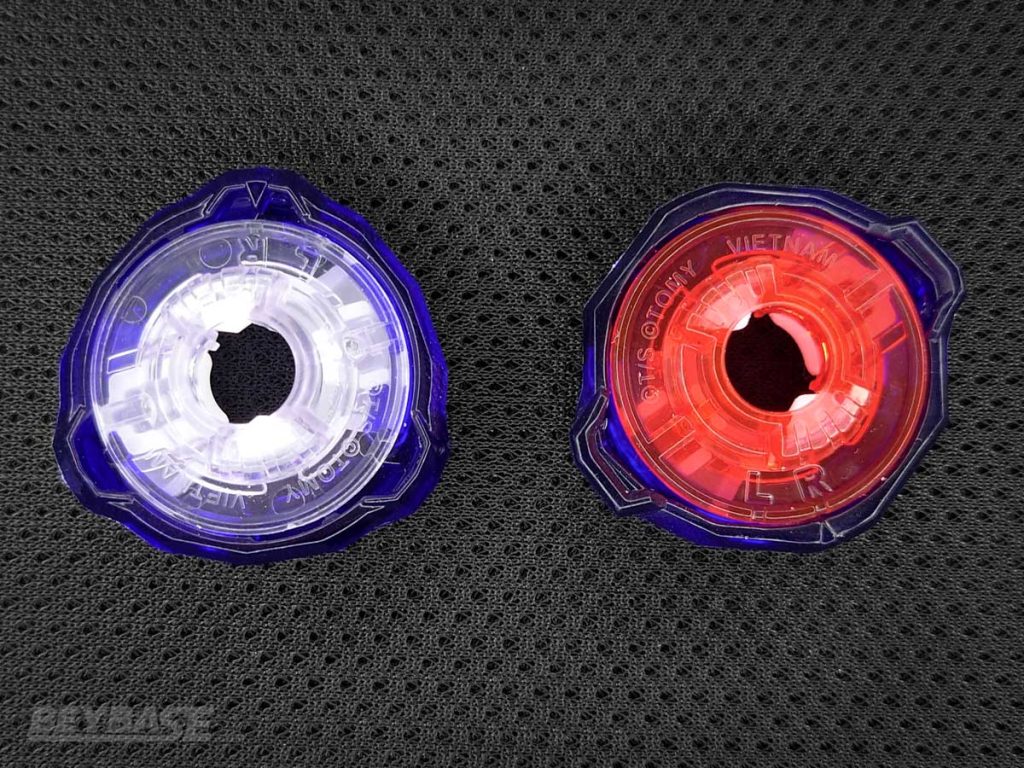
While we did highlight that the 2-60 Ratchet had some inherent risks to it that other Ratchets do not, namely the propensity to be Burst Finished at a higher rate, this doesn’t mean it is without use.
One potential use case for 2-60 Ratchet, where Burst Finish Risk is less of an issue, is in endurance mirror matches. These matches often see less knock-outs or chances for bursting in general, and are normally decided in favour of the combo with the greater raw spintime.
To this end we compared the 2-60 Ratchet to our previous benchmark, the 3-60 Ratchet, which still sees use in mirror matches to this day.
2-60 Ratchet vs 3-60 Ratchet Solo Spin Time Comparison
- Hells Scythe (Yellow) 3-60B: 2:30 Average Solo Spin Time
- Hells Scythe (Green) 3-60B: 2:26 Average Solo Spin Time
- Hells Scythe (Yellow) 2-60B: 2:14 Average Solo Spin Time
- Hells Scythe (Green) 2-60B: 2:20 Average Solo Spin Time
Both copies of Hells Scythe on Ball experienced radically different spin-times while using the 2-60 Ratchet, seemingly for no reason.
In some instances the 2-60 equipped combo out-spun the average 3-60 Ratchet record by a few seconds, then during the following measurement there was a 20 second spintime decline recorded.
Unfortunately, because this Ratchet’s spin times can be so erratic and its general use is risky, it is hard to recommend this as the top Ratchet for stamina mirror matches. It is technically above such Ratchets as 5-60 Ratchet, and may be able to go even with 3-60 Ratchet, but the risk is quite high.
It should also be noted that the greater tendency a given Bit has to precess, especially to a severe degree, the more likely it is that the 2-60 Ratchet overhang will cause scraping and result in early outspins.
The Verdict
The 2-60 Ratchet is a risky combo building choice that has little place in low-to-the-ground setups or Defense-oriented setups, only with some use in matches that are a test of combo endurance. As such, the 2-60 Ratchet is not recommended for competitive use overall.

Sponsored: Order the newest Beyblades at malloftoys.com!
Heads up: If you buy something through Mall of Toys, you won’t pay any extra, but I’ll get a small commission. This helps me keep things running. Thanks for your support!
Cyclone Bit Review

How is the Cyclone Bit Different from Other Bits?
The Cyclone Bit is very reminiscent of the Metal Fight Era’s Left Flat Bottom/Performance Tip, featuring 6 left-ward points with an indented flat center. This Bit, much like the bottoms of old, is a slow-starting, fast-when-going Attack type Bit with average endurance.
Cyclone Bit is similar in height to the Flat and Taper Bits, as opposed to the Low Flat Bit. Its plastic in the BX-34 release feels particularly hard when compared to some softer plastic recolours found in other Bits. This may point to greater longevity going into the future, especially for the gear points of the Bit.
Is the Cyclone Bit Good for Attack Type Combos?
We first compared it to Low Flat, a common staple for Attack enthusiasts to see how it performs when serving as the engine for the Shark Edge Blade:
Shark Edge 3-60C vs. Wizard Rod 9-60B
- SE3-60C wins: 5 wins, 11 points (1 XF, 1 BF, 3 OF)
- WR3-60B wins: 5 wins, 11 points (1 XF, 1 OF, 3 SF)
- Cyclone Bit Win Percentage: 50%
- Cyclone Bit Points Percentage: 50%
- Semi-worn Shark Edge Blade, worn Wizard Rod Blade
Benchmark: Shark Edge 3-60LF vs. Wizard Rod 9-60B
- SE3-60LF wins: 4 wins, 8 points (1 BF, 3 OF)
- WR9-60B wins: 6 wins, 6 points (6 SF)
- Low Flat Bit Win Percentage: 40%
- Low Flat Bit Points Percentage: 57%
- Mint Shark Edge Blade, worn Wizard Rod Blade
These results suggest that at the very least the Cyclone Bit is comparable to the Low Flat Bit and its ilk, solidly joining the crew of other Flat-style Bits as an excellent potential option for Bladers.
Its slow-starting nature means that it spends just a little bit more time in the center of the stadium before taking off on the Xtreme Line depending on your launch, which may be advantageous depending on your opponent’s launch technique.
Its speed buildup is also nothing to scoff at, building up and dashing across the Xtreme Line with ease. We would certainly recommend the Cyclone Bit for those that appreciate a more calm and controlled Attack Bit, similar to the Rush Bit.
Does the Cyclone Bit have better stamina than the Rush Bit?
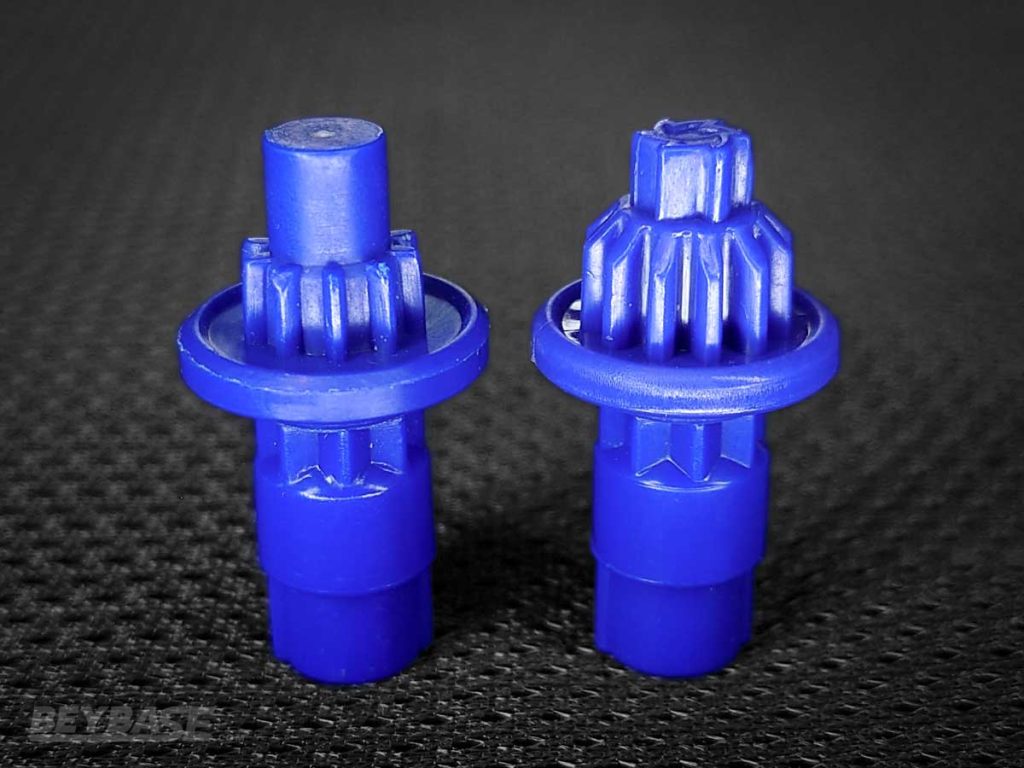
With its closest comparison seeming to be the Rush Bit, we decided to compare the two in terms of endurance as well as Xtreme Dashes. Our test subject was the steady and long-lasting Wizard Rod Blade on the relatively high Life After Death 9-60 Ratchet (less likely to scrape when at low RPM due to its more conservative design).
Our sample size was far from large, but we averaged out the times and dashes to come to a rough approximation of how each could be expected to perform in a very high endurance combo setting:
Cyclone Bit vs. Rush Bit Solo Spin Time and Xtreme Dash Comparison Comparison
- Wizard Rod 9-60C: 56.37s Average Solo Spin Time, 5.3s Average Xtreme Dashess
- Wizard Rod 9-60R: 1m 08.70s Average Solo Spin Time, 4.83s Average Xtreme Dashes
What we observed consistently was a higher number of Xtreme Dashes when using the Cyclone Bit but a lower spin time overall. The opposite for the Rush Bit.
This tends to align with the understanding that the more times a Beyblade Xtreme Dashes (coming into contact more with its environment, increasing friction and acceleration) the less endurance it will have for the duration of the match compared to it having not done so.
This is also true of simply making contact with the Xtreme Line (or any part of the stadium that isn’t the floor) briefly, which is why endurance mirror matches can be so erratic.
Overall, if one wishes to Xtreme Dash more frequently with a small hit to stamina, the Cyclone Bit is likely preferred over the Rush Bit. Conversely, if you are fine with your Beyblade doing less Xtreme Dashes on average but receive a bump in endurance, the Rush Bit is your friend.
Both of these Bits tend to behave similarly in terms of their patterning and speed, and are much more closely related to each other than the Flat family of Bits. If you want a 3on3 Deck that has two Rush-style combos in it, the Cyclone Bit covers you in a way only it can at the time of release.
Is the Cyclone Bit Good for Defense/Counter-Attack Type Combos?

Because it is a bit easier to control compared to its other Flat Bit counterparts, we thought that it could serve a similar purpose to Taper Bit. Namely, it would be an acceptable aggressive Bit choice for mobile defense options that does not take away in-demand Attack Bits like Rush Bit or Low Flat Bit from other parts of a Blader’s Deck.
We tested this out against Wizard Rod Blade’s most dangerous competition: the Shark Edge Blade. With Shark Edge Blade’s stupendous hits, we wanted to see if Cyclone could outlast the storm…
Wizard Rod 9-60C vs. Shark Edge 3-60LF
- WR9-60C wins: 7 wins, 15 points (2 BF, 2 OF, 3 SF)
- SE3-60LF wins: 3 wins, 6 points (3 OF)
- Cyclone Bit Win Percentage: 70%
- Cyclone Bit Points Percentage: 71%
- Worn Wizard Rod Blade, Semi-worn Shark Edge Blade
The end result was that Wizard Rod Blade on the Cyclone Bit trounced on the dedicated Attack type with ease, as we would normally expect with other Bits. The calm steadiness of the Cyclone Bit makes it easy to control without it flying completely off the handle into a pocket or Xtreme Finish Zone.
The end result is a very effective “Attack-hate” option that outlasts its greatest threat with ease, if it doesn’t knock it out. Overall it is clear that the Cyclone Bit is a very versatile one that can find a home on any existing Attack setup.
While the Rush Bit has taken the hearts of many for being a good middle ground between absolute aggression and tameness, we find that Cyclone could also easily fit that description. It can certainly fill in wherever an aggressive Attack Bit is needed and match that profile without being a rather exclusive Bit–like Rush is at the time of release of this Beyblade–to get your hands on.
The Verdict
The Cyclone Bit is an incredible part given its amount of aggression, speed build-up, and overall controllability. For those that want to flesh out their Attack Bit roster or use a Bit that is easier to handle, then the Cyclone Bit is right up there with the best of them.
Where to Buy BX-34 Cobalt Dragoon 2-60C Starter

Heads up: If you buy something through some of the links on this post, you won’t pay any extra, but I’ll get a small commission. This helps me keep things running. Thanks for your support!
What Do You Think of BX-34 Starter Cobalt Dragoon 2-60 Cyclone?
If you’re thinking of picking up Cobalt Dragoon 2-60 Cyclone be sure to let us know below what you think about it!
Or become a BeyBase HQ member to get early article access and behind-the-scenes updates. Thank you!


